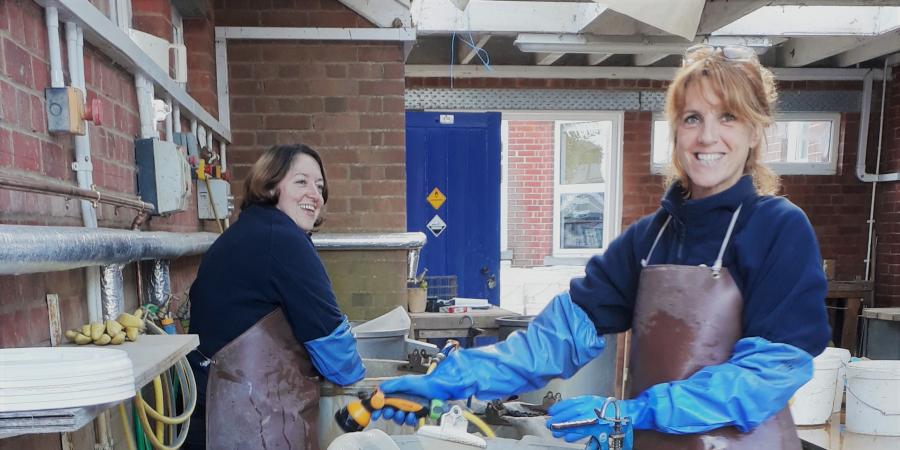A typical start to the day. I “woke up, fell out of bed, dragged a comb across my head”. A 5.30am alarm call, a drive through the New Forest, a mocha in the kitchen of the Salisbury office. At 7am, I’m ready.
My first job is to bottle the flots from the previous day. A large part of the job of an Environmental Lab Technician is the wet and dry processing of environmental samples. Wet processing involves removal of the soil, mainly in a flotation tank, and dry processing involves sorting out what’s left after the soil has been removed (i.e. a ‘flot’ and a ‘residue’). The flot is the lighter material that floats and largely consists of ecofacts, while the residue is the heavier material that sinks and largely consists of stones and artefacts. There are exceptions to the rule, of course, as some ecofacts sink and some artefacts float but this is corrected at the dry sorting stage.
While not obviously an important job, ’bottling the flots’ is actually what it’s all about in the environmental department. The information that our specialists obtain from analysing bottles of ecofacts fleshes out the archaeological context, contributing to (and sometimes changing) the interpretation. So, although it’s a basic procedure for the technician, it’s about the bigger picture for the archaeology.

Next, there are a few residues that still need to be dry sorted. These are from a tree throw thought to date to the Mesolithic so I’m particularly conscious of looking out for struck flint. As anticipated, there is debitage as well as some beautiful worked pieces (the impact of an artefact is often more immediate than that of an ecofact, but don’t tell my boss!). More obvious however, is the huge amount of burnt flint present and my thoughts go to our colleagues in ‘finds’ who will later have to weigh and count every piece! It’s only usually the larger fractions (at least 4mm) that tend to be sorted immediately. Anything smaller than this is left ‘unsorted’ but retained for later assessment should it be required. With this site however, because of the sheer volume, only the burnt flint above 9mm is sorted. The Finds team will breathe a sigh of relief.
In the afternoon I go outside to wet process more samples from the tree throw. The soil type here is clay and resolutely determined not to break down in water. Enter: hydrogen peroxide, the environmental lab technician’s best friend. When added to a soil sample soaking in water it creates a bubbling potion, emitting jets of gas and even causing the occasional eruption! Apart from being visually exciting however, it is invaluable in that the chemical reaction that creates all the visual theatrics also turns the immovable clay into the consistency of mousse. Job done. Thumbs, fingers and wrists are saved, as is any archaeological material that could be damaged by the increased handling and agitation required if peroxide is not used.
Now for something completely different; this afternoon I get the opportunity to rummage around in our extensive macrobotanical reference collection, with the purpose of putting together a mini version of it for our community engagement duo, Sam and Beth. The ‘outreach box’ is to contain examples of modern and archaeological ecofacts in the various states in which we find them: carbonised, mineralised and waterlogged. It is designed to help Sam and Beth demonstrate the basic principles and scope of environmental archaeology to non-archaeological audiences. And tomorrow the box will have its first outing, as it (and I) accompany them to Living Land, an outreach event for primary school children centred on all aspects of agriculture.
But first I need to get there. An atypical end to the day. A 3.15pm reminder to leave, a tiresome drive along the M25, a meal in a Kent gastropub., and by 10pm I’m done.
by Jenny Giddins, Lab Technician
